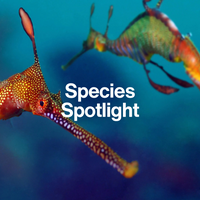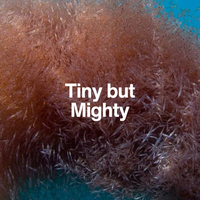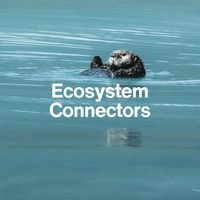The Ocean’s Fragile Fliers
Sea Butterflies

Delicate and translucent, sea butterflies flutter through the open ocean—tiny as a grain of sand, yet vital to marine ecosystems and climate balance.
Introduction
Grace in Miniature
Sea butterflies, or pteropods, are a group of free-floating sea snails that “fly” through the water with wing-like extensions. Despite their delicate look, they play a powerful ecological role in the ocean.
With tiny, coiled or winged shells made of aragonite (a form of calcium carbonate), they are not only a key food source for many animals—but also major players in the carbon cycle. But their fragility makes them especially vulnerable in a changing ocean.

Ecological Role
Delicate Drifters, Central Links
Pteropods serve as a vital mid-point in the marine food web:
- They feed on phytoplankton and microscopic algae
- They’re a key prey item for juvenile fish, whales, seabirds, and other plankton feeders
- Their calcium carbonate shells help sequester carbon when they sink to the seafloor, contributing to the ocean’s long-term carbon storage system
Without these small grazers, marine ecosystems—and ocean chemistry—would be thrown off balance.

Fun Fact
Some sea butterflies flap their “wings” up to 6 times per second to stay afloat—earning them the nickname “butterflies of the sea”. Despite looking delicate, these mini flappers migrate hundreds of metres each night in search of food!
Biology & Behaviour
Made for the Planktonic Life
Unlike other sea snails, pteropods live their entire lives in the water column.
- They move by flapping their foot-like appendages like wings
- Most are only 1–5 mm long, with some species growing up to 15 mm
- Some species have coiled shells (“thecosomes”), while others lack shells entirely (“gymnosomes”)
- They use mucous nets or filter-feeding to catch phytoplankton
- Shell-bearing pteropods play a critical role in calcium cycling
Their beauty is fleeting—many species are short-lived, highly sensitive to their environment, and at the mercy of ocean chemistry.

Threats & Challenges
Melting in the Modern Ocean
Pteropods are some of the ocean’s most sensitive organisms when it comes to acidification. Key threats include:
Warming Seas
alters their distribution and reproductive cycles
Pollution
disrupts feeding and movement
Ocean acidification
lowers pH levels, dissolving their thin aragonite shells
These disruptions threaten the base of ocean productivity—and the species that depend on it.
Did you know?
Pteropod shells have been found dissolving in parts of the Southern Ocean where carbon dioxide levels are especially high—even today.
Why They're Mighty
Sentinels of Change
Sea butterflies are more than plankton—they’re climate indicators. Their fragility makes them an early warning system for ocean acidification, showing us where and how fast the ocean is changing.
In their glassy shells lies the balance of food chains, carbon cycles, and global climate systems. They may be tiny, but they’re crucial.

Key Takeaways

NEXT SPECIES
Meet the Ocean’s Tireless Recyclers: Amphipods
Small crustaceans with big responsibilities, amphipods are scavengers, climbers, and key recyclers of ocean nutrients. Meet the ocean’s clean up crew—next.




